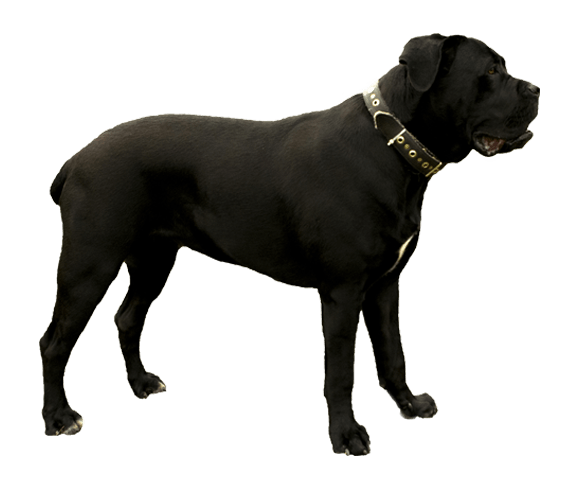Cane Corso Breed Maintenance
With a short coat, the Cane Corso needs only minimal grooming. It’s considered a light shedding breed, so their short hair should be brushed regularly with a soft bristle brush to remove any dead hair. Trim nails as necessary with a nail clipper to prevent them overgrowing or cracking.
You should also regularly check a Cane Corso’s ears to make sure there’s no build-up of wax or debris, which can lead to an infection.
It’s also important to brush your dog’s teeth regularly to ensure good dental health.
Cane Corso health risks
Like all dogs, Cane Corsos can develop health issues during their life. As a larger breed, they are prone to some hereditary health problems. Common health issues for a Cane Corso dog can include:
- Bloat
- Hip Dysplasia
- Seizures
- Eye problems and defects
- Bone and joint issues
Is your Cane Corso covered for all of these on your pet insurance? Compare top pet insurance providers in seconds.
Bloat
Bloat is a gastric condition that's more common in larger breeds like the Cane Corso. It’s a serious medical issue that can be fatal to your dog if not treated quickly.
Bloat occurs when the stomach expands due to gas or food, and twists or rotates. It can affect blood flow, make breathing difficult, and lead to other complications. If you suspect your Cane Corso is suffering from bloat — the medical term for which is gastric dilatation volvulus — you should treat it as an emergency.
Hip dysplasia
Hip dysplasia is another health problem that is diagnosed more frequently in large dogs like Cane Corsos, with mastiff types among the higher risk breeds. It affects the hip joint and can be a genetic condition that's evident in puppies. It can develop into osteoarthritis if it isn’t treated.
Because the hip joint is damaged, your dog may walk with a limp, and struggle to get up from a seated or lying position. Jumping might also be difficult.
Seizures
Cane Corsos can suffer from seizures, and particularly a condition known as idiopathic epilepsy. The Cane Corso Association of America advises that idiopathic epilepsy, if it does occur, usually does so when the dog is aged around 2 years old, though it can happen up to the age of 5.
Eye problems and defects
As a member of the wider mastiff family, the Cane Corso is susceptible to a range of eyesight defects and issues. These include entropion and ectropion. With Entropion, the dog’s eyelid rolls inwards. This can cause inflammation, soreness and infection in the eye. With Ectropion, the lower eyelid rolls out, making the eyes appear droopy and potentially exposing eye tissue. This can lead to cornea issues.
Cherry eye, when the eye and surrounding area can get red and swollen, is another possible issue affecting Cane Corso dogs.
Feeding a Cane Corso: what’s the best diet?
A high-quality diet is important for the Cane Corso. As a large breed, they need plenty of food, but also the right type of food to ensure they get the nutrition they require throughout their life.
Cane Corso puppies may need up to 4 meals a day while they’re in the growth and development stage. Dry food or kibble that’s high in protein and low in fat is recommended, while some Cane Corso owners favor raw food. Food that targets joint health can be beneficial, as Cane Corsos can suffer joint issues during their lifetimes.
When the Cane Corso is an adult, reduce the number of meals to 2 a day – don’t go for one big daily meal as this increases the risk of bloat. Check portion sizes to manage the Cane Corso’s weight. This is a breed that can become overweight if overfed.






